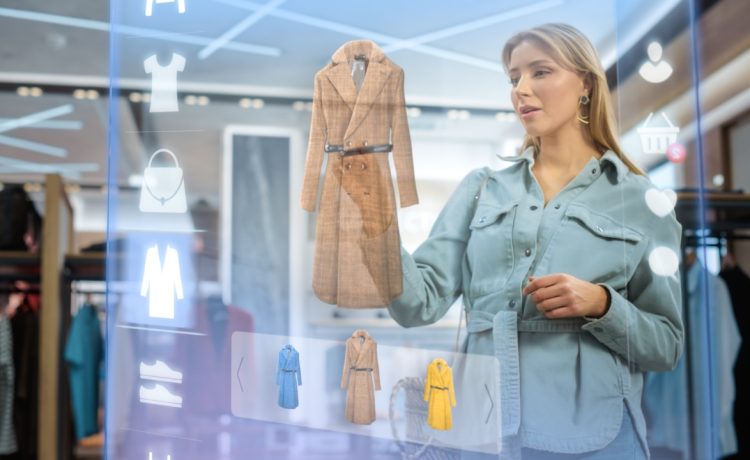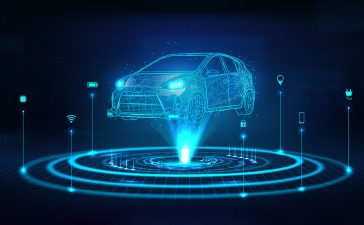The retail landscape has undergone dramatic transformations over the last decade, driven by rapid advancements in technology, changing consumer behaviors, and evolving market dynamics. From the rise of e-commerce giants to the growing importance of personalized shopping experiences, the innovations reshaping the industry are diverse and far-reaching. As we look ahead, it’s clear that the future of retail will be defined by further digitalization, heightened customer expectations, and new ways of delivering value. In this article, we explore the top ten retail innovations that are not only transforming the industry but also setting the stage for the future of shopping.
1. Omnichannel Retailing: Blurring the Lines Between Physical and Digital
Omnichannel retailing has evolved from a buzzword to a crucial business strategy that seamlessly integrates physical stores, e-commerce platforms, and mobile apps into one cohesive customer experience. This innovation ensures that consumers can shop whenever and however they want, whether that’s browsing in-store, shopping online, or using a mobile app to place an order.
What sets omnichannel apart is its ability to create a unified brand experience. A customer might start their shopping journey by browsing an online catalog, then visit a brick-and-mortar store to try on products, and finally purchase via a mobile app, selecting home delivery. This approach improves customer satisfaction by offering flexibility while boosting sales by reaching customers across multiple touchpoints.
2. Artificial Intelligence (AI) and Machine Learning for Personalization
Personalization has become one of the most powerful tools in the retailer’s arsenal. With the aid of artificial intelligence (AI) and machine learning, retailers are now able to deliver highly personalized shopping experiences. These technologies analyze vast amounts of customer data—from browsing history to social media activity—and use this information to recommend products, suggest promotions, and create tailored content that resonates with individual consumers.
AI-driven chatbots and virtual assistants also play an important role in personalization, helping customers find exactly what they’re looking for and providing 24/7 assistance. Retailers like Amazon and Netflix have already set the bar high by offering hyper-personalized experiences, and other brands are following suit to remain competitive.
3. Augmented Reality (AR) and Virtual Reality (VR)
Augmented reality (AR) and virtual reality (VR) are pushing the boundaries of how customers interact with products. These technologies allow consumers to experience products in a way that was previously impossible—providing a more immersive and interactive shopping experience.
For example, furniture retailers like IKEA use AR apps that enable customers to visualize how a piece of furniture will look in their homes before making a purchase. Similarly, fashion brands like Gucci have adopted AR technology to allow customers to try on clothes virtually, offering a new level of convenience and reducing the need for in-person trials. VR, on the other hand, offers a fully immersive experience where customers can explore virtual stores, try out products, or even attend virtual events.
4. Cashierless Stores
One of the most exciting innovations in retail is the advent of cashierless stores, where customers can simply walk in, pick up what they need, and leave without ever having to interact with a cashier. Amazon Go is perhaps the most prominent example of this technology, where customers use a mobile app to enter the store, and sensors and cameras track the items they pick up. Upon leaving, the purchase is automatically charged to their account.
Cashierless stores promise to streamline the shopping experience, reduce wait times, and improve operational efficiency. This innovation also has the potential to reshape the retail workforce, as fewer cashiers may be required, though more advanced roles in technology and automation will emerge.
5. Voice Commerce
Voice-enabled shopping, powered by virtual assistants such as Amazon Alexa, Google Assistant, and Apple’s Siri, is an increasingly popular trend in the retail sector. Consumers are now able to make purchases simply by speaking commands, whether they’re reordering a product, checking the status of a previous purchase, or searching for specific items.
Voice commerce simplifies the buying process, especially for tasks like reordering everyday items or making impulse buys. As voice recognition technology improves, voice commerce is expected to play an even greater role in shaping the retail experience, offering brands a new channel to engage with customers and enhance convenience.
6. Blockchain for Supply Chain Transparency
Blockchain technology, which allows for secure, transparent, and immutable record-keeping, is beginning to make waves in retail, particularly in supply chain management. With consumers increasingly concerned about the ethical sourcing and sustainability of the products they buy, blockchain offers a way for retailers to prove the authenticity and traceability of their goods.
From ensuring that products are ethically sourced to tracking the movement of goods in real-time, blockchain can significantly enhance transparency and build trust between consumers and brands. Walmart and other major retailers are already using blockchain to track food safety, ensuring that products can be traced back to their origin in the event of a recall or safety concern.
7. Robotic Process Automation (RPA) and Autonomous Delivery
Robotic process automation (RPA) is revolutionizing retail operations by automating repetitive and time-consuming tasks such as inventory management, order processing, and customer service. RPA systems can quickly and efficiently handle back-office functions, allowing employees to focus on higher-value tasks.
Alongside RPA, autonomous delivery systems—such as drones and self-driving vehicles—are beginning to be tested for retail deliveries. Companies like Wing (a subsidiary of Alphabet) are exploring drone-based delivery solutions that could make same-day deliveries faster and more efficient, while also reducing costs and the carbon footprint of traditional delivery methods.
8. Subscription and Rental Models
The rise of subscription services and rental models is a reflection of changing consumer preferences toward access over ownership. Subscription-based services, such as those for fashion, food delivery, or beauty products, allow consumers to pay a regular fee to receive curated items on a recurring basis, often with the flexibility to change selections or pause subscriptions at will.
Similarly, rental models are growing in popularity, particularly in fashion, where consumers can rent high-end clothing and accessories for a fraction of the retail price. Brands like Rent the Runway have successfully capitalized on this trend, offering consumers the opportunity to enjoy luxury items without the financial commitment of buying them outright.
9. Sustainability Innovations
Sustainability is a major focus for both consumers and brands alike. Retailers are increasingly adopting practices and technologies that reduce waste, minimize energy consumption, and promote the use of renewable resources. This includes everything from offering eco-friendly products and packaging to implementing energy-efficient lighting in stores and warehouses.
Innovations such as circular economy models, where products are designed to be reused or repurposed at the end of their lifecycle, are gaining traction. Brands like Patagonia have long been leaders in sustainable retail, and others are following suit by offering products made from recycled materials or promoting “buy-back” programs where customers can return used items for resale or recycling.
10. AI-Powered Customer Service
Customer service has always been a cornerstone of retail success, but AI is now taking it to new heights. AI-powered chatbots and virtual assistants can provide real-time customer support, answering questions, assisting with purchases, and even troubleshooting problems, all without the need for human intervention.
These systems are becoming more sophisticated, able to handle complex queries and offer personalized recommendations based on previous customer interactions. Brands like Sephora and H&M are using AI-driven chatbots to provide 24/7 support, improving the customer experience and allowing retailers to manage customer inquiries more efficiently.
Conclusion: Retail’s Future is Now
As we move further into the 21st century, the retail landscape will continue to evolve in exciting and unpredictable ways. From omnichannel experiences and AI-driven personalization to innovative delivery methods and sustainability practices, these top ten retail innovations demonstrate the sector’s commitment to meeting the ever-changing demands of today’s consumer.
For retailers, the key to thriving in this new era lies in embracing these innovations while staying agile enough to adapt to future trends. By leveraging technology, streamlining operations, and focusing on delivering value to customers, brands can successfully navigate the complex retail ecosystem and position themselves for long-term success. The future of retail is already here—and it is transformative.





